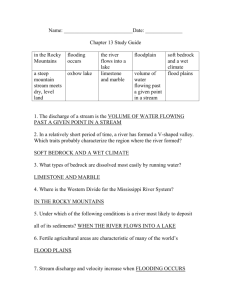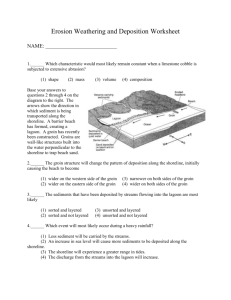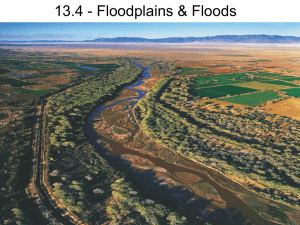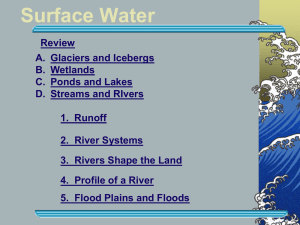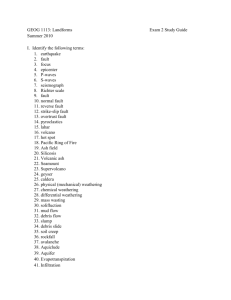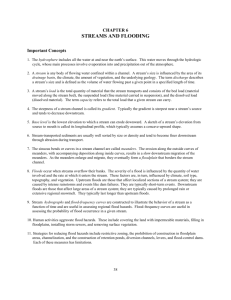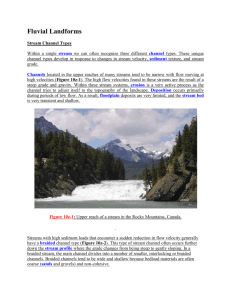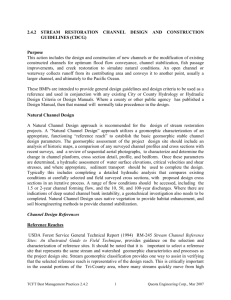Chapter 15 – River Systems
advertisement
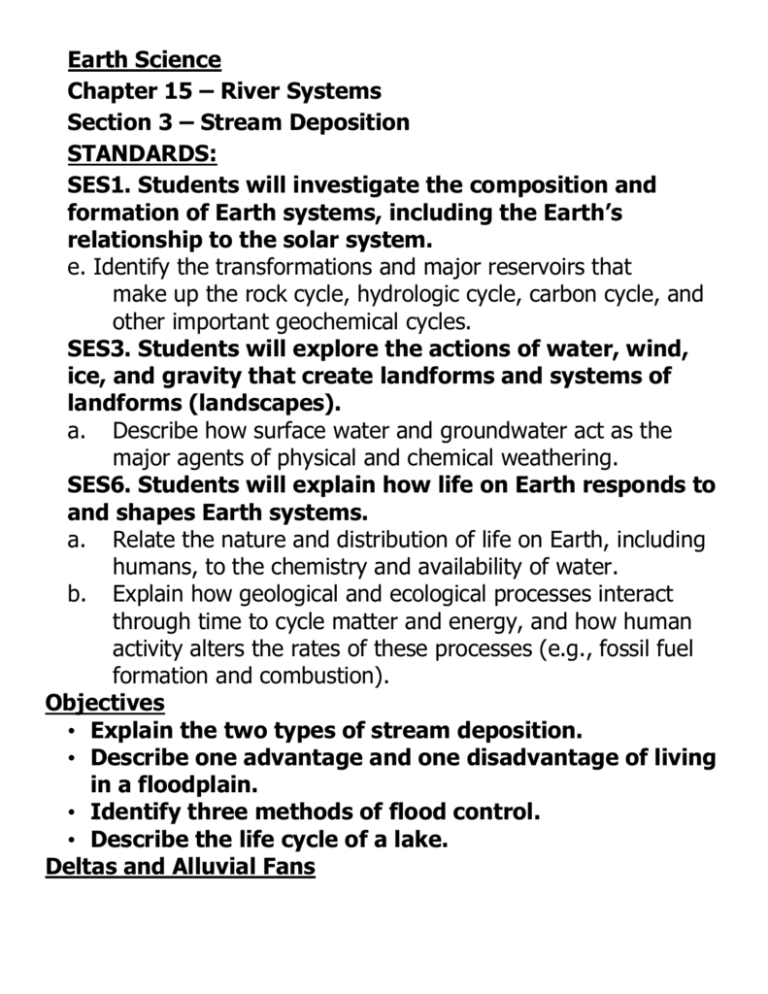
Earth Science Chapter 15 – River Systems Section 3 – Stream Deposition STANDARDS: SES1. Students will investigate the composition and formation of Earth systems, including the Earth’s relationship to the solar system. e. Identify the transformations and major reservoirs that make up the rock cycle, hydrologic cycle, carbon cycle, and other important geochemical cycles. SES3. Students will explore the actions of water, wind, ice, and gravity that create landforms and systems of landforms (landscapes). a. Describe how surface water and groundwater act as the major agents of physical and chemical weathering. SES6. Students will explain how life on Earth responds to and shapes Earth systems. a. Relate the nature and distribution of life on Earth, including humans, to the chemistry and availability of water. b. Explain how geological and ecological processes interact through time to cycle matter and energy, and how human activity alters the rates of these processes (e.g., fossil fuel formation and combustion). Objectives • Explain the two types of stream deposition. • Describe one advantage and one disadvantage of living in a floodplain. • Identify three methods of flood control. • Describe the life cycle of a lake. Deltas and Alluvial Fans delta - a fan-shaped mass of rock material deposited at the mouth of a stream; for example, deltas form where streams flow into the ocean at the edge of a continent • A stream may deposit sediment on land or in water. • The exact shape and size of a delta are determined by waves, tides, offshore depths, and the sediment load of the stream. alluvial fan - a fan-shaped mass of rock material deposited by a stream when the slope of the land decreases sharply; for example, alluvial fans form when streams flow from mountains to flat land • When a stream descends a steep slope and reaches a flat plain, the speed of the stream suddenly decreases. As a result, the stream deposits some of its load on the level plain at the base of the slope. • Alluvial fans differ from deltas in that alluvial fans form on land instead of being deposited in water. Floodplains floodplain - an area along a river that forms from sediments deposited when the river overflows its banks • The volume of water in nearly all streams varies depending on the amount of rainfall and snowmelt in the watershed. Natural Levees • When a stream overflows its banks and spreads out over the floodplain, the stream loses velocity and deposits its coarser sediment load along the banks of the channel. • The accumulation of these deposits along the banks eventually produces raised banks, called natural levees. Finer Flood Sediments • Finer sediments are carried farther out into the floodplains by the flood waters and are deposited there. • A series of floods produces a thick layer of fine sediments, which becomes a source of rich floodplain soils. Human Impacts on Flooding • Human activity can contribute to the size and number of floods in many areas. • Vegetation, such as trees and grass, protects the ground surface from erosion by taking in much of the water that would otherwise run off. • Logging and the clearing of land for agriculture or housing development can increase the volume and speed of runoff, which leads to more frequent flooding. • Indirect methods of flood control include forest and soil conservation measures that prevent excess runoff during periods of heavy rainfall. • More-direct methods include the building of artificial structures that redirect the flow of water. • The most common method of direct flood control is the building of dams. Another direct method of flood control is the building of artificial levees. READING CHECK Describe two ways that floods can be controlled. Floods can be controlled indirectly through forest and soil conservation measures that reduce or prevent runoff, or directly by building artificial structures, such as dams, levees, and floodways, to redirect water flow. The Life Cycle of Lakes • Most lakes are relatively short lived in geologic terms. • Many lakes eventually disappear because too much of their water drains away or evaporates. • Lake basins may also disappear if they fill with sediments. Streams that feed a lake deposit sediments in the lake. The lake basin may eventually become dry land.






